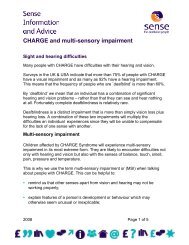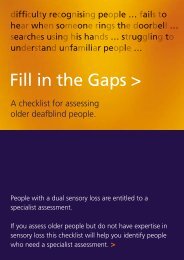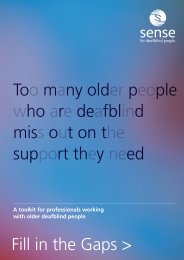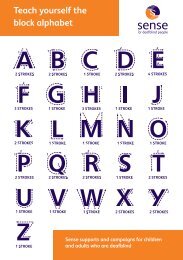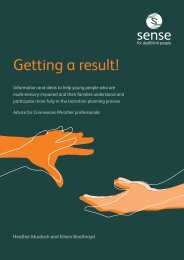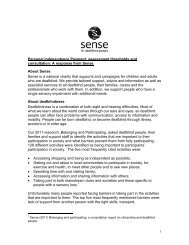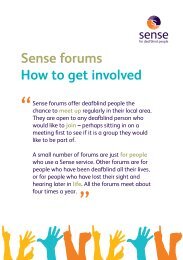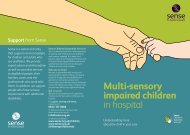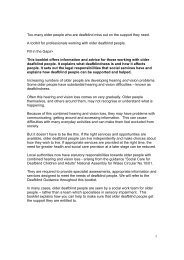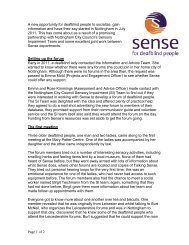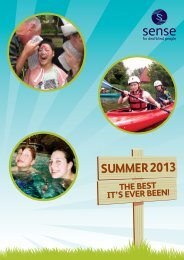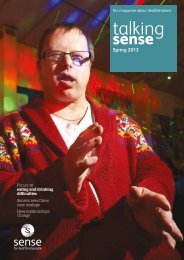MSI Unit Curriculum - Sense
MSI Unit Curriculum - Sense
MSI Unit Curriculum - Sense
Create successful ePaper yourself
Turn your PDF publications into a flip-book with our unique Google optimized e-Paper software.
<strong>MSI</strong> <strong>Unit</strong> <strong>Curriculum</strong>: Phase 4Topic work is increasingly emphasised as a means of introducing differentacademic subjects in a meaningful context. The links between different topicactivities are made overt, as are links between work in school and the widerenvironment.Pupils share a range of books with adults and peers, some about real familiarpeople and their own activities and some published story or non-fiction books.They are encouraged to use contextual and other cues in decoding the text and/or retelling the story.Different forms of social symbols (notably those used for toilets) are drawn topupils’ attention.Pupils are introduced to the alphabet through print, braille, Moon, fingerspellingand/or keyboard use.Pupils begin to record accounts of their experiences using recorded text (throughattempted writing, keyboard use and/or vocal recording) as well as drawings,photos, symbols or artefacts. They are supported in sharing their accounts withstaff and peers.Pupils begin to use formal systems to record ongoing events (for example, a tallychart to record the frequency of different weather conditions; a register grid torecord the presence or absence of class staff and pupils each day). They worktowards using these systems independently, recording either manually or throughICT. Staff support them in interpreting, collating and reflecting on the information.Pupils are introduced to formal value systems (for example, the values ofdifferent coins) using functional activities. This work is begun in class andreinforced in functional settings.Pupils are given frequent opportunities to problem solve. This may be withinestablished activities or routines (for example, when equipment ‘cannot’ befound) or as an activity in its own right (for example, pupils may be given certainmaterials and tools and asked to work out what they can do with them).Sensory responsesPupils integrate information from different senses. They understand theimplications of familiar sensory information and seek further information ifnecessary.They are greatly disadvantaged in non-optimal environments – for example,with high background noise levels, or where lighting causes glare.Ongoing assessment of sensory function continues.89




